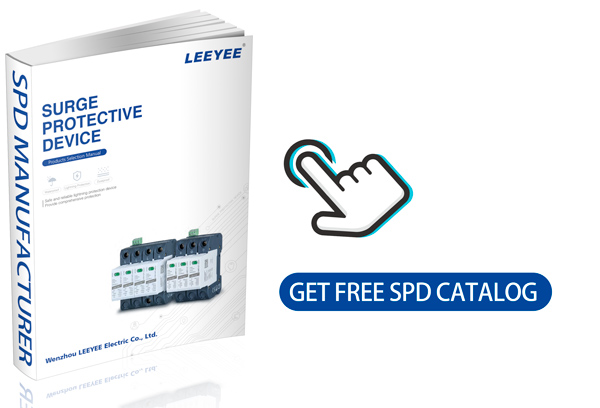A single power surge can wipe out your entire smart home system, industrial controls, or server rack, causing massive downtime. Whole house surge protector installation is the only effective defense. LEEYEE, a certified surge protection manufacturer, supplies UL-/CE-certified whole-house SPDs rated up to 200 kA, sub-25 ns response time—best-in-class for residential and commercial installations.
Explore below how full-panel SPDs safeguard the entire building infrastructure.
Whole house surge protector installation means integrating a main-panel surge device that diverts transient overvoltages—whether from lightning or grid switching—before they reach downstream systems.
Still wondering how to size, install, and coordinate whole‑home SPDs? Let’s dive deeper.
Why You Need Whole House Surge Protector Installation
Transient voltage spikes often originate from utility switching, lightning strikes, or inductive loads starting/stopping. Without a panel-level surge device, these surges travel through the service entrance, damaging every branch—including sensitive electronics, HVAC, lighting, and industrial controls.
Key Risks Without Proper Installation:
-
Equipment burnout and instant failure
-
Data center crashes and network outages
-
Increased EMI, relay chatter, and control errors
-
Voided warranties and insurance liabilities
Installing a full-panel SPD preserves system continuity and prevents widespread damage.
Technical Overview: Whole-House Surge Protector Installation
Components of a Whole-House SPD:
-
High-capacity MOVs rated for 120 kA – 200 kA (8/20 µs) duty cycles
-
Thermal fuse or fail-safe disconnect to prevent fire upon overload
-
Voltage Protection Level (Up) ≤1.5 kV for 240 VAC systems
-
UL 1449 Type 1 or 2 Listing, CE / CB Certified
-
Green/red LED or dry contact for remote health status
Installation Guide:
-
Service Entrance Mount: SPD installed inside main breaker box or meter base
-
Branch Panel Coordinated Install: Secondary SPD near subpanels for high-sensitivity areas
-
Grounding Requirements: <10 Ω per NEC; <5 Ω for critical systems
-
MCB Coordination: Choose 10 kAIC breakers for backup isolation
LEEYEE Whole-House SPD Lineup
| Model | Imax (8/20µs) | Up @ 240VAC | Mount Type | Standards |
|---|---|---|---|---|
| LY1-C40 | 40 kA | ≤1.2 kV | DIN-rack | UL1449, IEC61643-11 |
| LY1-B100 | 100 kA | ≤1.5 kV | Panel-mounted | CE, CB, ISO9001, TUV |
These devices serve single-family homes, multi-family buildings, or even microgrids—ensuring total infrastructure protection.
Installation Best Practices
-
Install at primary service point before main breaker
-
Short conductor lengths (<6 in) to minimize series impedance
-
Parallel branch-SPDs for sub-circuits like data racks or solar inverters
-
Use torque-rated connections and inspect ground integrity post-installation
-
Periodic checks of indicator LEDs; replace after major surge events
FAQs – Whole House Surge Protector Installation
1. What is whole house surge protector installation?
It’s installing an SPD at the service panel to protect every circuit downstream.
2. Why choose a panel-mounted SPD?
It clamps surges before they enter branch circuits, offering comprehensive protection.
3. Do I need more SPDs after the main one?
For sensitive electronics (servers, servers, solar inverters), yes—add subpanel-mounted devices.
4. What standards must SPDs meet?
UL1449 Type 1 or 2, IEC 61643-11, with thermal disconnects per UL requirements.
5. How often should SPDs be replaced?
After handling >50 kA, visible damage, or indicators turning red; typically every 5–10 years.
6. Can I install it myself?
Only licensed electricians should install panel-level SPDs—they ensure NEC and local code compliance.
7. Does LEEYEE offer localized models?
Yes—we support UL-listed units for North America, CE models for EU, and IEC/CCC-rated devices for Asia.
⚠️ Disclaimer
This technical guide is for informational purposes only and should be implemented by licensed electricians or engineers. Always adhere to local electrical codes and installation standards when performing whole house surge protector installation.

